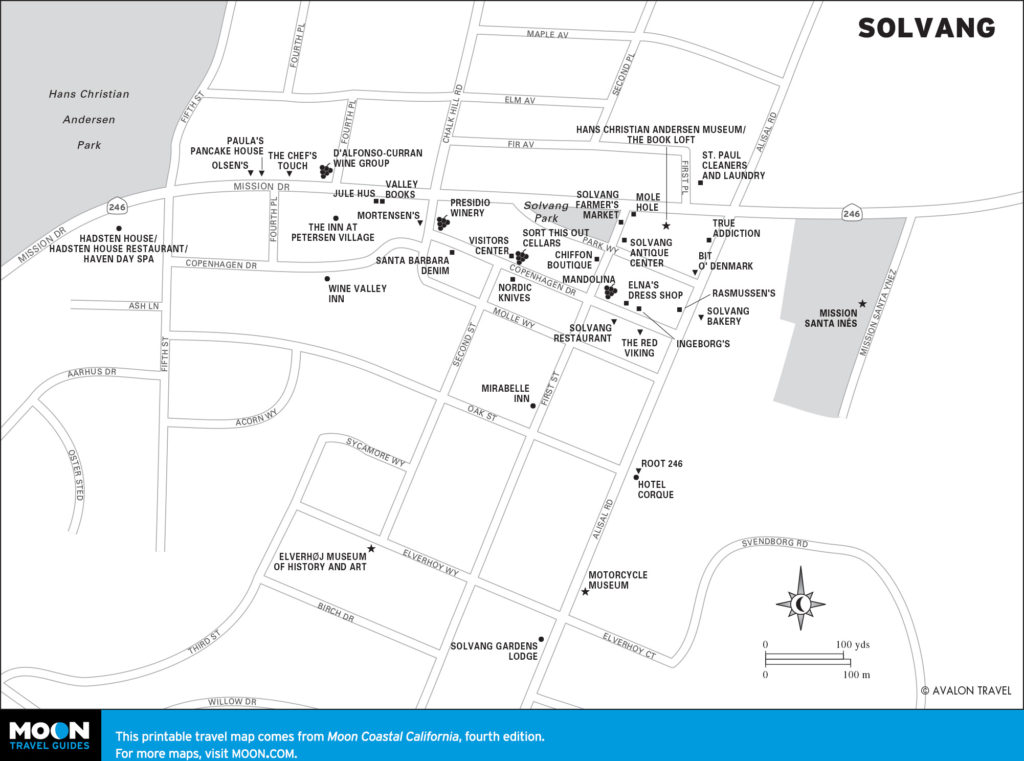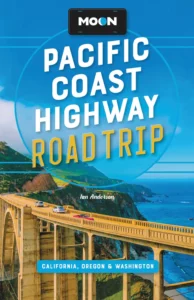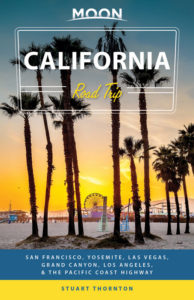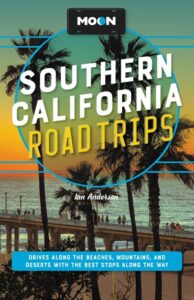Pismo Beach to Solvang
Pismo Beach
South of San Luis Obispo, Hwy-1 and US-101 run along the ocean past Pismo Beach (pop. 8,213), a family-oriented beach resort where the main attraction is driving or dune-buggying along the sands. Pismo was once famous for its clams, now over-harvested to the point of oblivion. While you may still see people pitchforking a few small ones out of the surf, you won’t find any on local menus.
Like the rest of Southern California, the Pismo area has grown significantly in the past two decades, thanks mainly to an influx of retired people housed in red-roofed townhouses. Price Street, the old main road running through the heart of the old small town, still offers a wide range of motels and restaurants, like the popular Cracked Crab (751 Price St., 805/773-2722), which has fish ’n’ chips and a crazy range of fresh crab and other crustaceans (almost all of which come from Alaska). For a close approximation of Pismo’s once-abundant clams, walk two blocks from the Cracked Crab, past the bowling alley, to another seafood specialist, the Splash Café (197 Pomeroy Ave., 805/773-4653), which is locally famous for clam chowder served up in edible bowls made of freshly baked bread.
While Pismo is most popular for summer fun, every winter a grove of trees just south of downtown turns into a prime gathering spot for migrating monarch butterflies. The largest groupings, numbering in the tens of thousands, though decreasing disturbingly quickly in recent years, are usually found roosting at the North Beach Campground of Pismo State Beach, along Hwy-1 off Dolliver Street.
Guadalupe and Santa Maria
South of Pismo Beach, California’s coastal highways again diverge. Hwy-1 cuts off west through the still-agricultural areas around sleepy Guadalupe (pop. 7,625), where produce stands sell cabbages, broccoli, and leafy green vegetables fresh from the fields. The town itself feels miles away from modern California, with a four-block Main Street lined by Mexican cafés, bars, banks, and grocery stores.
If you opt to follow US-101, shopping malls and tract-house suburbs fill the inland valleys through rapidly suburbanizing Santa Maria. Among barbecue aficionados, the Santa Maria region is famous for its thick cuts of salsa-slathered barbecued beef. These can best be sampled at Jocko’s (125 N. Thompson Ave., 805/929-3686, Sun.-Thurs. 8am-10pm, Fri.-Sat. 8am-11pm) in Nipomo, east of US-101 at the Tefft Street exit. Great steaks and mouthwateringly moist, inch-thick barbecued pork chops highlight the no-frills Jocko’s menu. The meats are not soaked in sauces, but simply cooked over smoky oak charcoal.
Lompoc and La Purisima Mission
The rolling valleys around Lompoc are famed for their production of flower seeds, and consequently the fields along Hwy-1 are often ablaze in brilliant colors. Apart from colorful murals adorning downtown buildings, Lompoc as a town is not up to much, despite the unusual nature of the area’s two main nonagricultural employers. One is a minimum-security federal prison; the other is Vandenberg Air Force Base, site of numerous missile tests, the aborted West Coast space shuttle port, and the $60 billion “Son of Star Wars” National Missile Defense program.
With its long arcade reaching across the floor of a shallow grassy valley, La Purisima Mission (805/733-3713, Jul.-Aug. Tues.-Sun. 10am-4pm, Mon. 10am-3pm, Sept.-June Tues.-Sun. 10am-4pm, $6 per car) gives a strong first impression of what the missions may have looked like in their prime. Four miles northeast of Lompoc, between Hwy-1 and US-101 on Hwy-246, the mission here was originally built in 1812 but fell to ruin partially due to an earthquake before being totally reconstructed as part of a WPA project in the New Deal 1930s. During the restoration, workers used period techniques wherever possible, hewing logs with hand tools and stomping mud and straw with their bare feet to mix it for adobe bricks. Workers also built most of the mission-style furniture that fills the chapel and the other rooms in the complex. Other features include a functioning aqueduct, many miles of hiking trails, and a small museum.
Buellton and Solvang
The town of Buellton, a block west of US-101 at the Solvang exit, holds one of California’s classic roadside landmarks, Pea Soup Andersen’s (376 Ave. of the Flags, 805/688-5581), advertised up and down the coast. Another Buellton landmark, The Hitching Post II (406 E. Hwy-246, 805/688-0676), a little ways east of US-101, starred in the wine-loving road-trip movie Sideways.
Four miles east of Buellton and US-101, America’s most famous mock-European tourist trap, the Danish-style town of Solvang (pop. 5,876), was founded in 1911. Set up by a group of Danish immigrants as a cooperative agricultural community, Solvang found its calling catering to passing travelers. The compact blocks of cobblestone streets and Old World architecture, highlighted by a few windmills and signs advertising the Hamlet Inn among many more suspicious claims to Danishness, now attract tourists by the busload. Many other U.S. towns (Leavenworth, Washington, and Helen, Georgia, to name two) have been inspired by Solvang’s success, but to be honest there’s nothing much to do here apart from walking, gawking, and shopping for pastries.
Just east of Solvang’s windmills and gables, the brooding hulk of Old Mission Santa Inés stands as a sober reminder of the region’s Spanish colonial past. Built in 1804, it was once among the more prosperous of the California missions but now is worth a visit mainly for the gift shop selling all manner of devotional ornaments.

Gaviota State Park and Refugio State Beach
Between Solvang and Santa Barbara, US-101 follows the coast past some of California’s most beautiful beaches. Dropping through a steep-sided canyon, US-101 reaches the coast at Gaviota State Park, where a small fishing pier and campground are overwhelmed by the massive train trestle that runs overhead. Continuing south, US-101 runs atop coastal bluffs past prime surfing beaches, usually marked by a few VWs pulled out along the west side of the highway.
Midway along this stretch of coast, some 22 miles north of Santa Barbara, Refugio State Beach has groves of palm trees backing a clear white strand. There’s also a small store (spring weekends, daily summer) and a number of attractive campsites with hot showers. Reservations for camping (800/444-7275) at Gaviota or Refugio, or at any California state beach, should be made in advance.
California’s Central Coast Travel Map

















